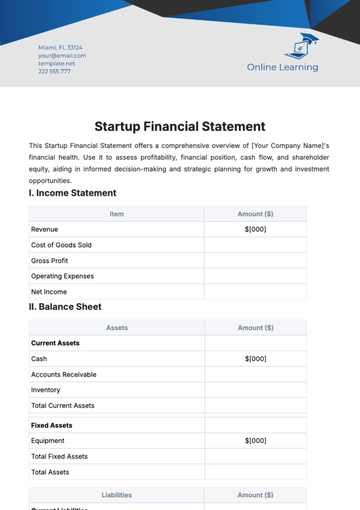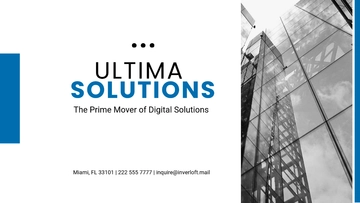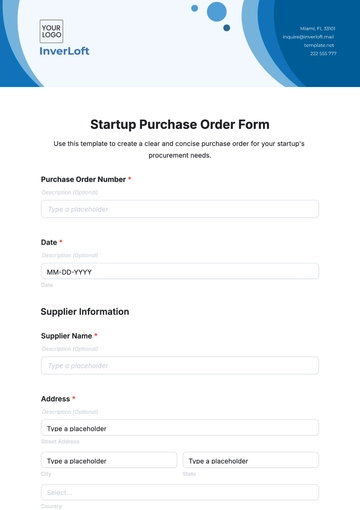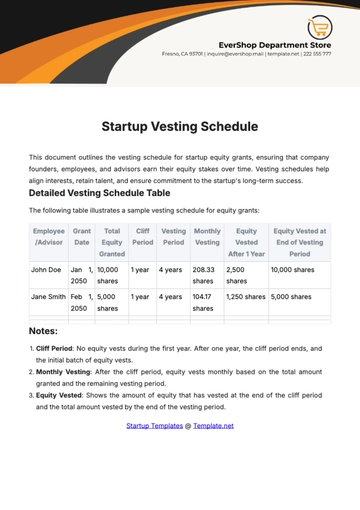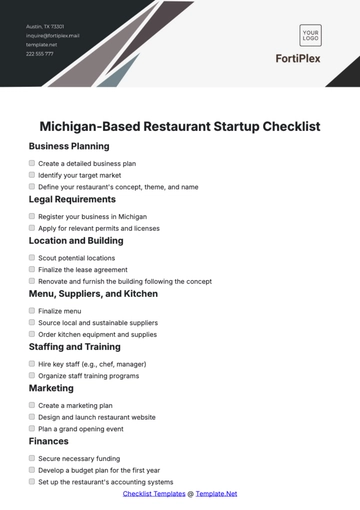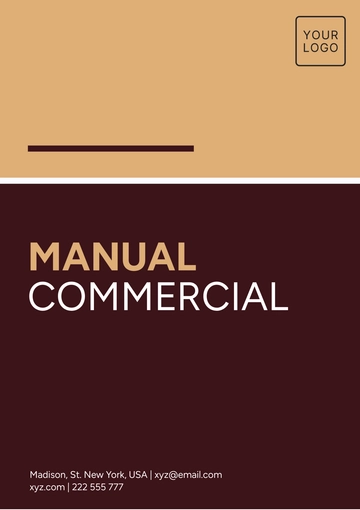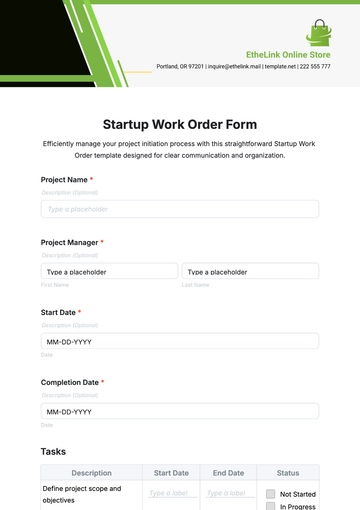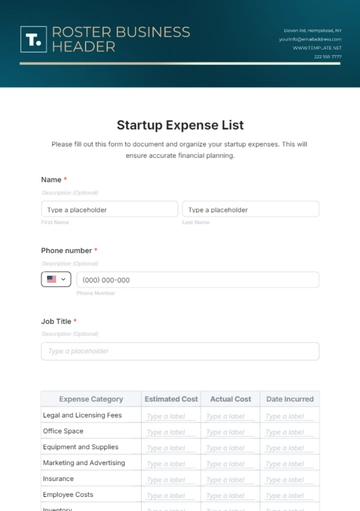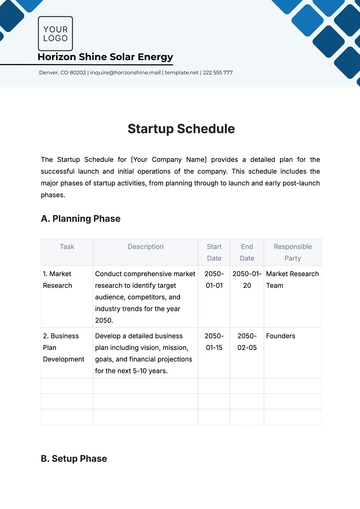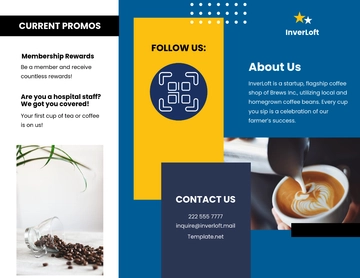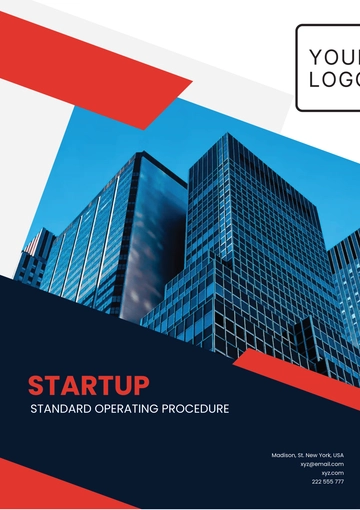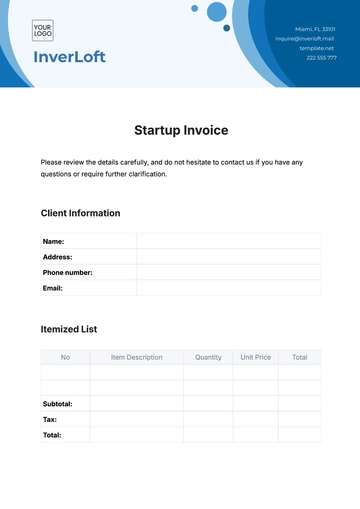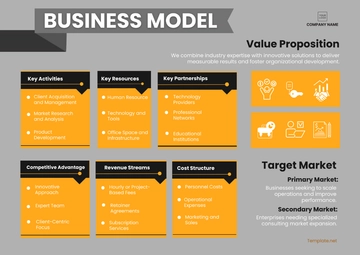Free Startup Safety Compliance Document
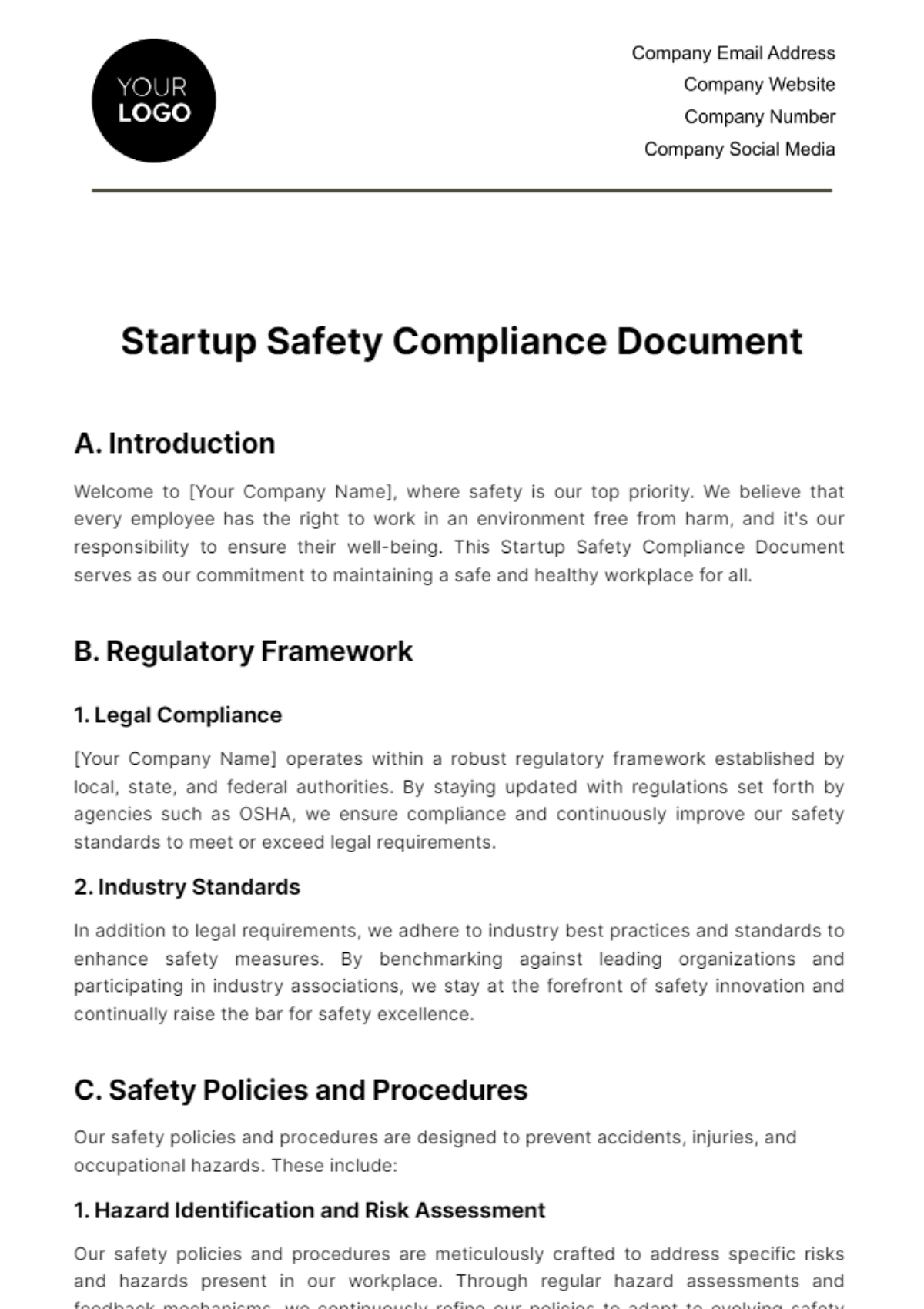
A. Introduction
Welcome to [Your Company Name], where safety is our top priority. We believe that every employee has the right to work in an environment free from harm, and it's our responsibility to ensure their well-being. This Startup Safety Compliance Document serves as our commitment to maintaining a safe and healthy workplace for all.
B. Regulatory Framework
1. Legal Compliance
[Your Company Name] operates within a robust regulatory framework established by local, state, and federal authorities. By staying updated with regulations set forth by agencies such as OSHA, we ensure compliance and continuously improve our safety standards to meet or exceed legal requirements.
2. Industry Standards
In addition to legal requirements, we adhere to industry best practices and standards to enhance safety measures. By benchmarking against leading organizations and participating in industry associations, we stay at the forefront of safety innovation and continually raise the bar for safety excellence.
C. Safety Policies and Procedures
Our safety policies and procedures are designed to prevent accidents, injuries, and occupational hazards. These include:
1. Hazard Identification and Risk Assessment
Our safety policies and procedures are meticulously crafted to address specific risks and hazards present in our workplace. Through regular hazard assessments and feedback mechanisms, we continuously refine our policies to adapt to evolving safety needs.
2. Safety Committee
To ensure comprehensive oversight of safety initiatives, we have established a dedicated safety committee comprised of representatives from various departments. This committee meets regularly to review safety performance, identify areas for improvement, and implement corrective actions.
3. Safety Communication
Effective communication is vital for fostering a culture of safety. We promote open dialogue and encourage employees to report safety concerns promptly. Additionally, we utilize various channels, such as safety meetings, newsletters, and digital platforms, to disseminate important safety information to all staff members.
D. Workplace Safety Training
All employees of [Your Company Name] receive comprehensive safety training upon hire and ongoing refresher courses. Training topics include:
1. New Employee Orientation
All new employees undergo comprehensive safety orientation sessions upon hire to familiarize them with our safety policies, procedures, and expectations. This orientation covers essential topics, including emergency procedures, hazard recognition, and the proper use of personal protective equipment (PPE).
2. Ongoing Training Programs
Safety is an ongoing process, and we provide regular training programs to ensure that employees remain up-to-date on safety protocols and best practices. These programs include refresher courses, toolbox talks, and specialized training tailored to specific job roles or hazards.
3. Specialized Training
In addition to general safety training, employees receive specialized training based on their job responsibilities and potential hazards they may encounter. This includes training on equipment operation, hazardous material handling, and emergency response procedures.
E. Emergency Preparedness Plan
[Your Company Name] has an established emergency preparedness plan to address various scenarios, including:
1. Emergency Response Team
To effectively respond to emergencies, we have designated an emergency response team consisting of trained volunteers from various departments. This team is responsible for coordinating emergency response efforts, conducting drills, and providing assistance during crisis situations.
2. Evacuation Procedures
Clear evacuation procedures are essential for ensuring the safety of all employees during emergencies. We have established evacuation routes, assembly points, and designated individuals responsible for assisting individuals with disabilities during evacuations.
3. Crisis Communication
Timely and effective communication is critical during emergencies. We have established communication protocols, including alert systems, phone trees, and digital notifications, to ensure that all employees receive timely information and instructions during crisis situations.
F. Safety Equipment and Maintenance
We provide and maintain necessary safety equipment to mitigate risks in the workplace. This includes:
1. Equipment Procurement
We prioritize the procurement of high-quality safety equipment and ensure that it meets relevant safety standards and regulations. Additionally, we collaborate with reputable suppliers to source reliable safety equipment that is suitable for our specific workplace hazards.
2. Routine Inspections
Regular inspections of safety equipment and facilities are conducted to identify any signs of wear, damage, or malfunction. These inspections are performed by trained personnel according to established schedules and documented to track maintenance needs and compliance.
3. Maintenance Scheduling
Prompt maintenance and repairs are essential for ensuring the reliability and effectiveness of safety equipment. We have established maintenance schedules and procedures to address any issues identified during inspections promptly. Additionally, employees are encouraged to report any equipment malfunctions or deficiencies for immediate attention.
G. Recordkeeping and Documentation
[Your Company Name] maintains thorough records to demonstrate compliance with safety regulations. Documentation includes:
1. Incident Reporting
Accurate and thorough incident reporting is essential for identifying trends, addressing root causes, and implementing corrective actions. We maintain detailed records of all incidents, including near misses, injuries, and property damage, to track trends and measure our safety performance.
2. Training Records Management
Documentation of employee safety training is essential for verifying compliance and demonstrating competency. We maintain comprehensive training records, including attendance logs, course materials, and certifications, to ensure that all employees receive the necessary training to perform their jobs safely.
3. Inspection Logs
Regular inspections of safety equipment, facilities, and work areas are documented to track compliance and identify any deficiencies or maintenance needs. Inspection logs include detailed records of inspection dates, findings, corrective actions taken, and follow-up activities to ensure that safety standards are upheld.
H. Conclusion
At [Your Company Name], safety is not just a priority; it's a core value embedded in everything we do. By prioritizing the well-being of our employees and maintaining high safety standards, we create a workplace where everyone can thrive. Together, we are committed to fostering a culture of safety excellence and ensuring a secure environment for all.
For inquiries or further information, please contact:
[Your Name]
[Your Company Email]
[Your Company Phone Number]
- 100% Customizable, free editor
- Access 1 Million+ Templates, photo’s & graphics
- Download or share as a template
- Click and replace photos, graphics, text, backgrounds
- Resize, crop, AI write & more
- Access advanced editor
Introducing the Startup Safety Compliance Document Template available on Template.net. Ensure your startup meets safety regulations effortlessly with this editable and customizable template. Tailor it to your unique needs and industry standards with ease. Editable in our intuitive Ai Editor Tool, it simplifies the process of creating and maintaining safety compliance documentation, making safety a top priority for your startup.
You may also like
- Startup Agreement
- Non Profit
- Transport and Logistics
- Education
- IT Services and Consulting
- Startup Presentation
- Startup Business Plan
- Startup Proposal
- Startup Plan
- Startup Brochure
- Startup Form
- Startup Flyer
- Startup Checklist
- Startup Budget
- Startup Poster
- Startup Contract
- Startup Invoice
- Startup Letterhead
- Startup Quotes

